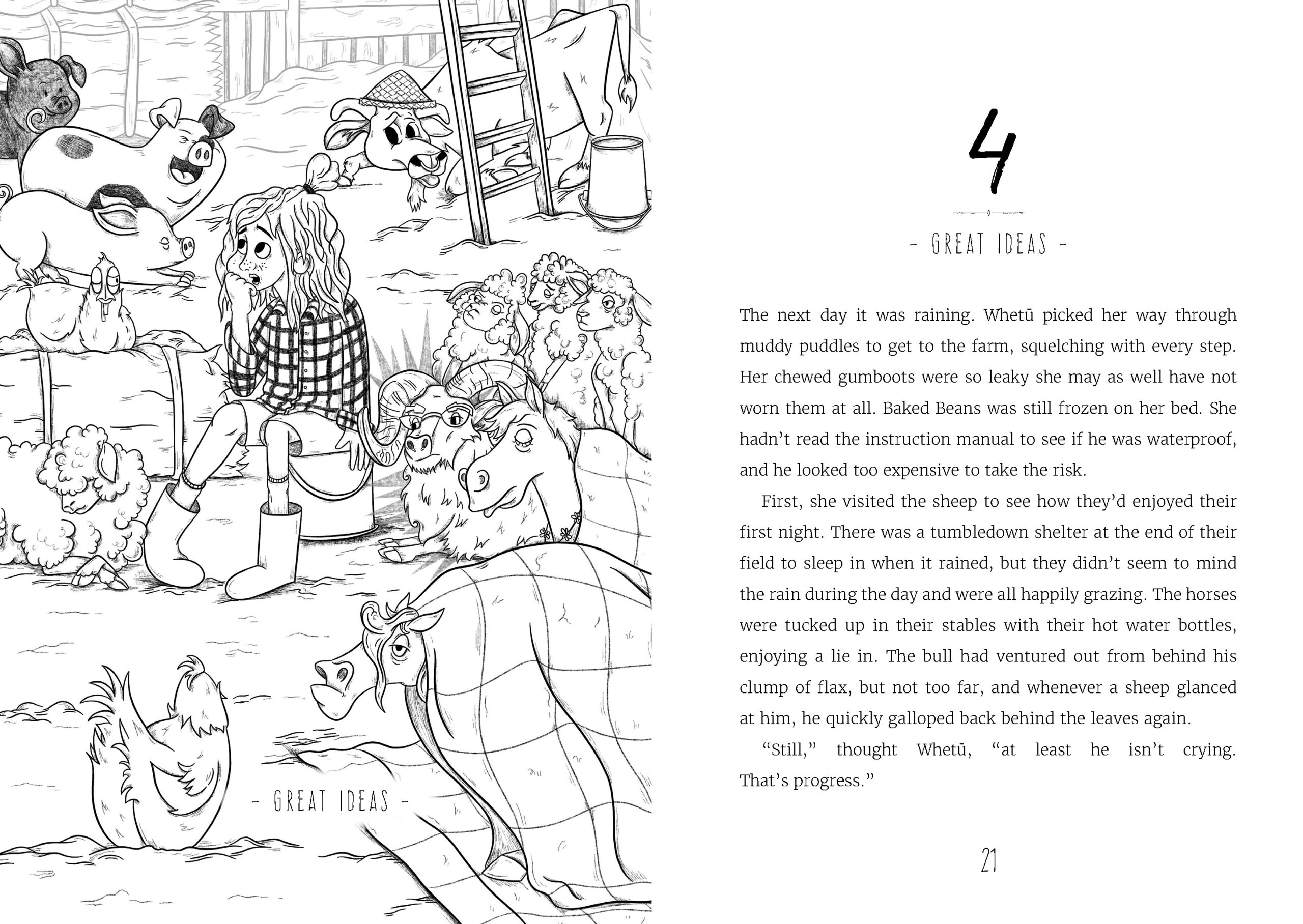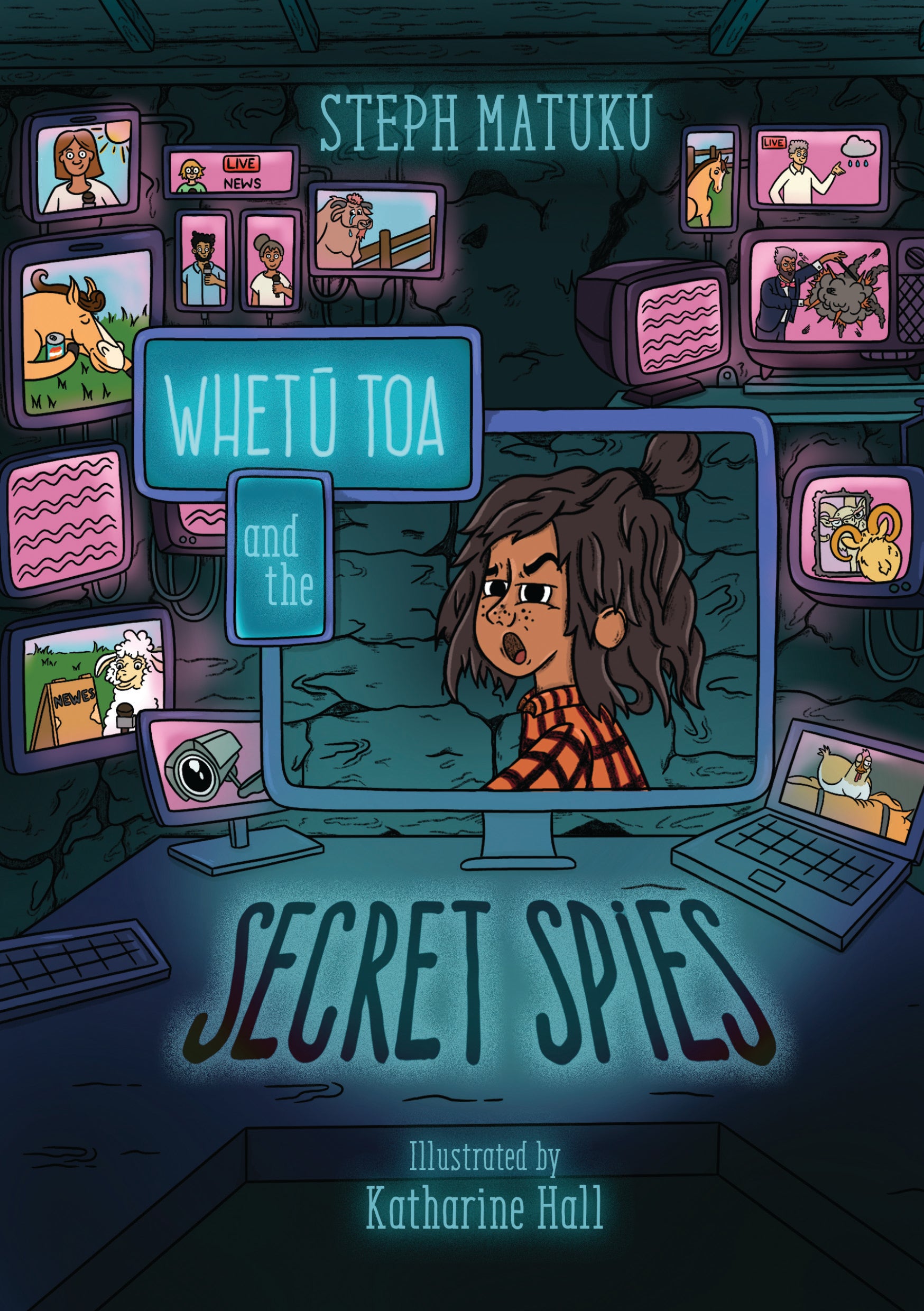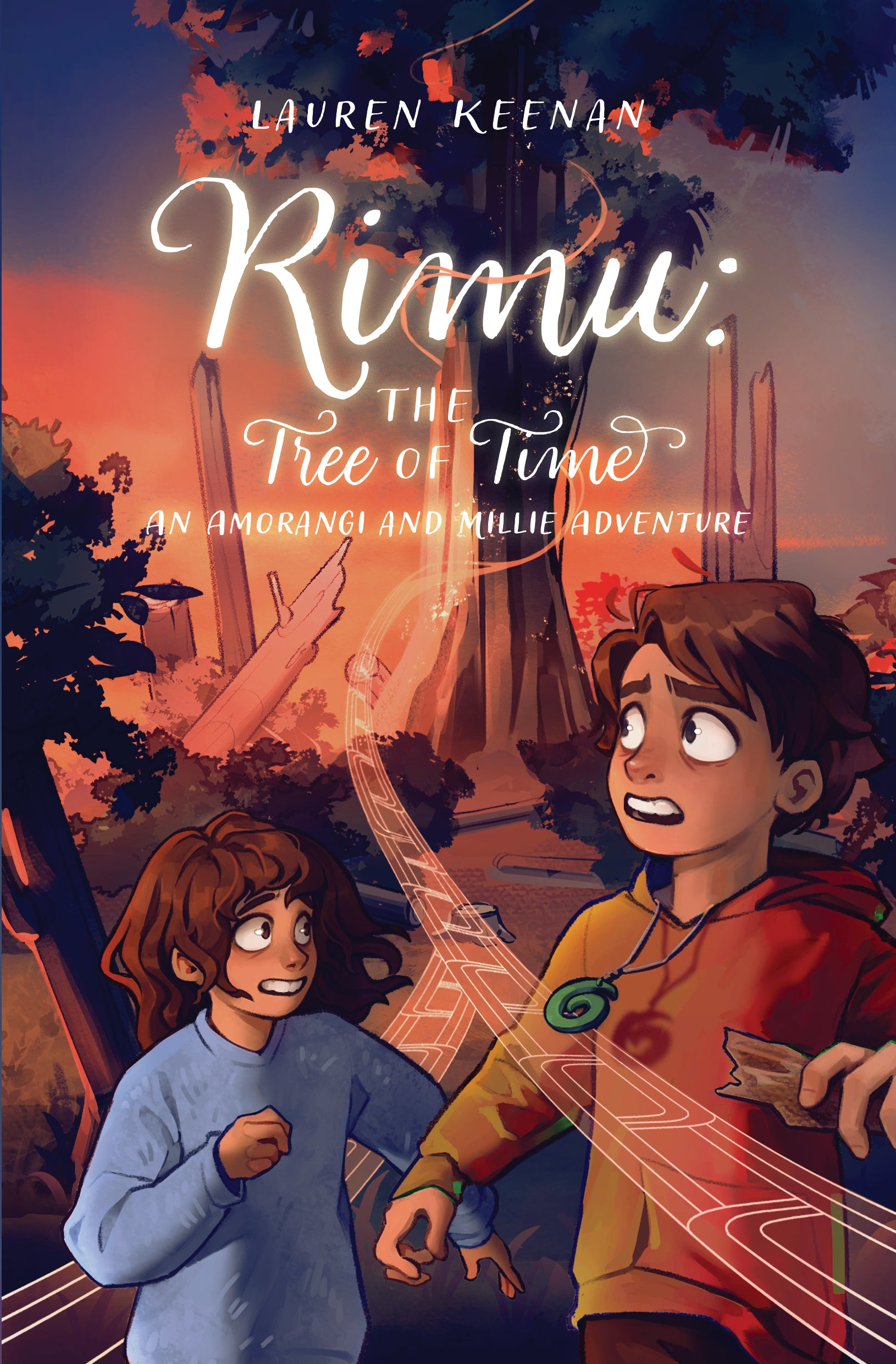Cassie Hart reviews a new book in the Whetū Toa series and a sequel to Amorangi and Millie’s Trip Through Time.

Whetū Toa and the Secret Spies, by Steph Matuku and illustrated by Katharine Hall (Huia Publishers)
Steph Matuku manages to subtly deliver on many different themes in this fast-paced third addition to the Whetū Toa series. Whetū lives with her mother on a farm filled with magical animals and owned by a magician whose motivation isn’t always clear. It’s lovely to return to the farm and hang out with the animals, explore facets of the magical house, and see what the Mighty Mikaere is up to.
Someone is stealing the Mighty Mikaere’s magic tricks, and Whetū sets out to discover who, while also juggling the addition of a flock of sheep and a robot dog to her responsibilities.
With the arrival of the sheep, we’re shown that Ramses believes he is smarter and more capable than the female members of his species. Ramses isn’t portrayed as ‘bad’ for his gender bias, though Matuku makes it clear that his way of thinking belongs in the past. The sheep help Whetū to see that more clearly. They set about organising a protest, inviting other animals to air their grievances at the same time, which spreads disruption across the farm. It’s a deft way to bring in the idea of sexism, and while the sheep plot their protest, Whetū helps Ramses to learn about it as well. By the end of the novel, he’s made radical changes to his behaviour. The sheep have been heard, and he has supported them and admitted he was wrong. It’s a positive outcome for all involved.
Meanwhile, the robot dog goes on a small rampage, terrifying the bull, putting everyone at odds with the dog and allowing Matuku to introduce conflict between nature and technology. Ultimately technology plays an integral part in solving Whetū’s mission to uncover who is spilling the magician’s secrets.

Help with the robot-dog comes from an unexpected animal, which means that the book is also about assumptions—everyone in the farmyard calls the pigs lazy and expects nothing of them but they invite Whetū into their secret. They’ve built a secret base beneath the farm and are building rocket cars and inventing fake bacon to keep themselves safe.
So much of the way we think about people relies on stereotypes and assumptions, so this was a brilliant way to prompt readers to actually get to know someone before making a decision about who they are.
The changing nature of relationships is examined again in a subplot about Whetū’s mother meeting a romantic interest. She tries to feel out whether her child misses having a father, or the idea of one at the very least. Whetū has to think about potentially sharing her mother with someone else. The approach is both sensitive and compassionate.
Whetū wants her mother to be happy and acknowledges her own potential jealousy. She wonders if her suspicion of the love interest is well founded, or reflects her own misgivings about the situation. Whetū’s reflection is wise and caring, and I think lots of children from single parent families or families who have separated will see themselves in these pages, and see that it’s okay to have many conflicting feelings, even when it’s uncomfortable.
One of the highlights of these books is the awesome art by Katharine Hall that accompanies each chapter. Hall has done a fantastic job of capturing the inhabitants of the magician’s farm in all their glory. I loved the way this brought all of the characters to life and enhances the story.
As always, Steph Matuku delivers an engaging, fun story with a lot of heart. I can’t wait to see what comes next for Whetū.

Whetū Toa and the Secret Spies
By Steph Matuku
Illustrated by Katharine Hall
Published by Huia Publishers
RRP: $25.00
Rimu: The Tree of Time, by Lauren Keenan (Huia Publishers)
Lauren Keenan’s follow up novel to Amorangi and Millie’s Trip Through Time is a whirlwind that embraces the whakataukī ‘Kia whakatōmuri te haere whakamua’, which translates to ‘I walk backwards into the future with my eyes fixed on my past’, and encourages us to see how time is intertwined—past, present, and future.
Amorangi and Millie find themselves drawn back to 1860, standing next to a giant rimu that stands in the past and in their present. They are later chased into the bush by a man called Te Pōrangi, who loses the children but finds the rimu. He decides to chop it down for profit, killing a young man in the process who turns out to be the sibling’s ancestor. His death erases Amorangi and Millie’s family line from existence. This sparks a terrifying countdown; they must save the tree or they will disappear forever.
I’ve not read the first volume in this series, but it was easy to get a feel for the characters, their relationship and how the time travel system works. I particularly enjoyed how the bark from the rimu was used as a link between different moments in history and how the figurative reclamation of the wood helped to restore time to its proper order.
In chasing the pieces of rimu through time we see various ways in which the wood was used. It is an inventive way to link different parts of history and helps to show young readers all the different ways that resources can be used, from something mundane like a crate, to a toy car or a beautiful piece of furniture—all from the same tree. We don’t often think about where our possessions come from, and this felt like a creative way to prompt questions in the minds of young readers.
It was lovely to see this brother and sister working as a team and having their own learning along the way, something masterfully handled by Keenan. By separating the siblings, she made room to explore several different themes. Millie’s storyline gave us an intimate view of Māori who were forced to leave their papa kāinga [home base] and travel to another, and the ways in which war causes harm on a personal, familial and tribal level.
Amorangi on the other hand did more of the time travel, taking us to Mokopuna Island in 1903 where a Chinese grocer, Kim Lee, was exiled for supposedly having leprosy, and to the Tarawera eruption. Keenan provides an intense account of what it may have been like for those living at the time.
There are many fast-paced, high-tension moments…
There are many fast-paced, high-tension moments, but they are broken up with warmth, kindness and consideration. Even the man the locals have dubbed ‘Te Pōrangi’ (crazy) is given a chance at redemption. When he is dragged through time with Amorangi he is exposed to many different sights, people and to new knowledge, which shifts his perspectives. He starts to see the natural world as more than something to exploit and questions his belief that white settlers have more rights than Māori.
Ultimately it’s a novel filled with tension, conflict and a depth of history that was never present in the books of my own childhood. Keenan has brought the past to life in a vibrant, intimate way that I know readers will connect with. I hope there are more titles in this series to come.


Cassie Hart
Cassie Hart (Kāi Tahu) is an award-winning author of speculative fiction. She lives nestled between Taranaki Maunga and the ocean, where she nurtures children, cats, and story ideas.



